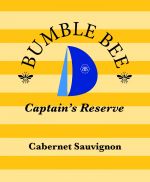
 Oh my. It’s December already, the year has flown by on super accelerated wings, the holiday season is here and no one asked if I was ready for any of this. Well, time waits for no woman. Least of all me. (Ask Bob.) So might as well enjoy it with…what? Hmmm…cheery holidays, festive food, cold weather…what would complement these wintry components? Ah, how about Ice Wine?
Oh my. It’s December already, the year has flown by on super accelerated wings, the holiday season is here and no one asked if I was ready for any of this. Well, time waits for no woman. Least of all me. (Ask Bob.) So might as well enjoy it with…what? Hmmm…cheery holidays, festive food, cold weather…what would complement these wintry components? Ah, how about Ice Wine?
If you crave a little sweet something at the end of your winter meal, be it extraordinary or Tuesday night, try a couple of ounces of a very tasty dessert wine. My favorite of them all, Ice Wine.
Or Eiswein as the Germans say. And they ought to know. Because although there is mention of it in Ancient Rome, the first modern example of ice wine comes from Franconia in Germany in 1794. During the particularly hard winter of that year, winemakers were forced to create a wine from the frozen grapes on hand. The result was so delicious that they kept at it. Thus the declaration was made, you vill drink it, and you vill enjoy it. And I do!
(Spelling geeks take note here. Ice wine for general referencing, Ice Wine in the US, Icewine in Canada and Eiswein in Germany and Austria. Ok? Ok. I’ll try to keep them straight.)
“The greatest ice wines possess an almost otherworldly contrapuntal tension between acidity and sweetness, making drinking them an ethereal sensation.” So says Karen MacNeil author of the Wine Bible. I thought that was quite the statement. And on that note, let’s learn a little more about it.
Ice wine can only be made in cold climates. Germany, Austria and Canada are currently the leaders in production. Here in the states, New York is the biggest producer making a small amount in the Niagara Escarpment AVA (American Viticultural Area) with most coming from the Finger Lakes region in upstate New York. Many other European countries, indeed, any country that can depend on a cold winter, can and do make ice wine. Unfortunately, with climate change, some traditional areas are now having problems with weather unpredictability. But, on the up side of this problem, it is enabling other countries, even China, to start producing their own varieties of ice wine.
Here’s the thing. Ice wine is a labor of love. The process of making it strikes me as fairly miserable as I’m firmly against being out in the cold. But it’s a good thing other people don’t mind because out in the cold they are. The whole thing starts with grapes that have gone through the usual trials and tribulations of getting through the summer to get nice and ripe. But while their counterparts are being harvested and made into wine in the fall, the grapes destined for ice wine hang on and on, well into the dead of winter. The long hang time concentrates the grapes’ sugar and acid. Then when they are frozen solid, assuming they have survived pests, diseases, mold, rot, bad weather, hungry animals, and, especially, birds, they are finally hand picked and on their way to fulfilling their destiny. This means workers are out in the middle of the night, bundled up, picking grapes with gloved hands in sub freezing temperatures before the sun, and temperature, goes up. Brrrr! But this is crucial because the grapes must remain frozen all the way back to the winery. Indeed, in the freezing winery these little hard marbles are dumped into the press to immediately start the long process of crushing them. Nowadays they use special presses to do this, because many heritage presses were destroyed by this process in the past.
It’s risky business for the winery since this endeavor is entirely reliant on the power of the elements. Some years the grapes don’t freeze at all and there is no ice wine for that year. Sometimes the harvest takes place after the new year. (In which case the label will carry the previous year.) And netting and protecting the crop for that long is imperative! Nevertheless, wineries carry on, as I guess, all farmers do, in spite of all, always hoping for the best.
Ok, back to the grapes. It takes about 4 to 6 hours to compress enough grapes for one bottle of ice wine, taking between 30 to 35 pounds of grapes to slowly drip out a half liter of ice wine juice. That’s about 17 ounces of sweet, high acid, concentrated sweet nectar, and only about 10 to 20% of the liquid in grapes resulting in much less wine than a normal crush would produce. The water in the grapes stays in the form of ice crystals that eventually get separated from the juice and thrown out. The sugars do not freeze. Just to give you an idea of how sweet these grapes are, they are picked when they were somewhere between 32 and 46 Brix (measurement of sugar content at harvest) as opposed to most table wine which is picked at 21 to 25 Brix. This nectar produces the sweetness of the fruit and also the characteristic high acidity that makes it refreshing, not cloying. Then there’s a long fermentation, using special yeasts, that takes anywhere from 2 to 6 months. After that, they are bottled in splits aka half bottles (375ml) because a little goes a long way. And, in about 1 1/2 to 2 years, you can drink it. Whew.
Canada, with its reliably cold winters, produces more ice wine than any other country. Canadian Icewine has almost mythic status and virtually every top producer tries to make one. This is in no small part due to its leading producer, Inniskillin, who brought the Canadian wine industry out from the backwaters to international attention. They began producing Icewine in 1983. Its first harvest in 1982 was completely lost due to a crucial, and unthought of, oversight. During a single night, after a big snowfall, right when they were ready to harvest, hungry birds that couldn’t get to the ground but could certainly get to the vines, ate every last berry. Oy, yoy, yoy. After that, nets! And success!
The grapes used in Canadian Icewine are usually Riesling or Vidal Blanc, which is a French American hybrid, for making its whites. But they also use Cabernet Franc for a vibrantly colored version. Also Canadian law requires that the grapes be picked at no higher than -8*C (17.6*F). Brrrr again!
As I mentioned earlier, Germany originally gave the world its craving for Eiswein. It has legally mandated minimum natural sugar levels. These vary slightly from region to region and depending on the variety of grape. Which is primarily Riesling one of the noble grapes of the country. The legal harvesting temperature must be -7*C (19*F) or colder.
(I repeat myself here – brrr!)
Austria has similar rules to Germany. They also use Grüner Veltliner – a significant, indigenous white grape of the country.
On a last note, I wanted to mention that there are wines out there called Iced Wines. These wines are made by commercially freezing the berries and are definitely considered cheating by purists. Due to obvious reasons, ice wines usually carry a hefty price tag. Iced wines will always be much less expensive. So watch your labels if you want the authentic thing.
Expanding on that last note, I also wanted to mention the agreement between the New World and the Old World. As of 2000, Canada, Austria and Germany forged what is thought to be the first international agreement concerning a dessert wine. Under the agreement, all three countries have pledged to make ice wine only in the traditional centuries old manner by allowing the grapes to freeze naturally on the vine, picking them by hand one frozen grape at a time, and following the painstaking vinification outlined above. Who said we can’t forge good relationships!
Ok, folks, that about wraps up this discussion. I’m now going to wrap up my hands and and my head and get to the store to hand pick me a beautiful bottle of ice wine to go with my fruit tart tonight. Or should I have crème brûlée? In either case, I suggest you do the same.
Happy Holidaze!












0 Comments